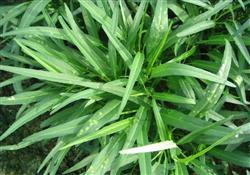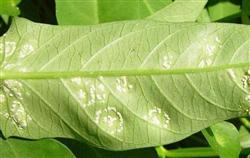How to manage asparagus in solar greenhouse

After planting or direct seeding of asparagus seedlings, ploughing and loosening the soil should be carried out many times in order to increase the ground temperature, promote rooting and remove weeds in the field. Asparagus seedlings need less water at seedling stage and can be irrigated properly. The soil should be kept moist after harvest. After the first harvest, 15 kg of urea or 20 kg of diammonium phosphate was applied per mu, and topdressing was applied with irrigation. After that, topdressing is done every 20 days or so. In the middle and later stage of the growth of asparagus, the plant should be adjusted at any time combined with harvest. On the one hand, the topsoil can be used to cultivate the base of the plant to promote the occurrence of adventitious roots and make the plant grow healthily; on the other hand, the branches where there are too many lateral branches and the branches are crowded and thin can be thinned, so that the growth of branches and vines is balanced, ventilation and light transmission is good, and the quality is improved. When the seedling branches grow to about 35 cm, they are harvested for the first time, leaving 3-4 nodes at the base of the branches and picking tender shoots. The axillary buds left behind will soon produce new shoots, and the new shoots at different nodes will occur sooner or later. When the new tip grows to 20 cm, it can be harvested again. After 3-4 times of harvesting, only 1-2 nodes are left at the base of the stem, which is conducive to the renewal of plant branches and prevent the growth of too many branches. Of course, if there are great differences in the growth of different plants, the degree of harvest should also be different. That is to say, the plants with strong growth can be picked lightly and early, while the plants with weak growth can be harvested again and late, so that the nutrients are concentrated, strong new shoots grow and the yield is increased.
- Prev

Off-season cultivation techniques of water spinach (Ipomoea aquatica)
Due to the high temperature and heavy rain after the beginning of summer, a kind of white rust is easy to occur. The control methods are as follows: (1) choose disease-free seeds and seed treatment: select disease-free land to keep seeds, soak the newly bought seeds in 50 ℃ warm water for 25 minutes, cool and sow seeds. (2) strengthen the management of garden fields: select high terrain and drainage.
- Next

How to control white rust of hollow cabbage
1. Rotation with other vegetable varieties for 2 to 3 years. Second, before sowing, seed sterilization is carried out according to the proportion of 100kg seeds 300g and 35% metalaxyl; third, at the initial stage of the disease, 6000 to 7000 times solution of 50% nail cream copper wettable powder is used, or 72.2% Pulic water agent 8000 times solution is sprayed, once every 7 to 10 days.
Related
- Where is it suitable to grow horseradish in China? it is expected to see the middle altitude horseradish in Alishan.
- How to prevent tomato virus disease reasonably? (Control methods included)
- Many people like to plant towel gourd on the balcony. What are the main points of this method and management?
- What crops can chili peppers be mixed with?
- Fertilization techniques and matters needing attention in Tomato
- What are the grafting techniques for peach seedlings in spring?
- Harm and control methods of root swelling disease of Chinese cabbage
- What are the pests of sweet potatoes? How to prevent and cure it?
- Symptoms, causes and Control methods of navel Rot in Tomato
- The cause of "Cucumber rotten bibcock" in Farmers' planting Cucumber and its Control Plan

